 by David W Brown Middletown RI April 2024
by David W Brown Middletown RI April 2024
Radio has been a big part of my life. It has brought enjoyment and relaxation … much information … better understandings of other traditions … communications in remote places … security in dicey situations … a way to reach and teach rural people in interesting ways … and in retirement, via our Newport County Radio Club, interactions with sharp persons who gladly share their skills with novices like me, and who put those skills to good use in emergency networking and such.
As a Connecticut boy in the 1930s and 40s, I listened to AM stations in New England and New York, and sometimes browsed the shortwave bands on our handsome living-room Zenith … which been a major Depression-era outlay for my family. The day often began for my farm-manager dad and me with Frank Atwood and his folksy but informative New England farm radio broadcast on WTIC. (Later, while a student at UConn, I was hired by Mr. Atwood to do yard work around his home in Storrs. Despite his radio fame, he was a very mild-mannered, quiet-spoken person.)
Then it might be WTIC’s Bob Steele for Connecticut news and weather. Or, for my mom, WOR’s John B Gambling. If home at noontime, it could be Fred Waring and the Pennsylvanians.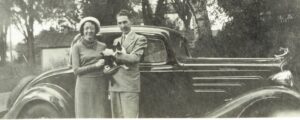 After school, there were the 15-minute serials, advertising breakfast cereals — Jack Armstrong, Hop Harrigan, Captain Midnight, and — my favorite — Tom Mix. To send in cereal boxtops and 25 cents for hike meters, secret decoders, and such was a big part of it. http://old-time.com/kidshows/ Then, around 7 to 8, came the half-hour shows … especially the Lone Ranger, whose theme, the Willliam Tell Overture, still yields nice recollections.
After school, there were the 15-minute serials, advertising breakfast cereals — Jack Armstrong, Hop Harrigan, Captain Midnight, and — my favorite — Tom Mix. To send in cereal boxtops and 25 cents for hike meters, secret decoders, and such was a big part of it. http://old-time.com/kidshows/ Then, around 7 to 8, came the half-hour shows … especially the Lone Ranger, whose theme, the Willliam Tell Overture, still yields nice recollections.
Connecticut having lots of factories and workers who had come from Europe, there was lots of ethnic music on our local stations. I liked Polish polkas — to the dismay of my mom, an accomplished pianist-organist who played classical and church music.
******************
But the 1940s brought more serious events to our living room — first-hand radio reports of the Dunkirk evacuation, London bombings, Pearl Harbor, the U.S. Army’s last shortwave message from Corregidor, D-Day, the Battle of the Bulge … the 1944 circus fire in Hartford … President Roosevelt’s death ….
And radio commercials urging us to buy war bonds, to have Victory gardens, to recycle paper and metals, and not to spread rumors.
And the live celebrations from Times Square when the War ended in 1945.
When in high school, I myself dabbled with being a disc jockey … played music like Vera Lynn, Patti Page, Russ Morgan, South Pacific, and the Weavers. By sending in six caps from Cott’s ginger ale bottles, I got to be a DJ on a New Haven station for a couple of half hours, and was a finalist in their contest.
***************
As a UConn freshman, I helped for a few Friday nights with a WHUS program, Suitcase Serenade. The station transmitted just through campus steam pipes, and most students had headed home for the weekend. We must have had a listening audience of about 50!
In 2023, student leaders of UConn’s WHUS happened to see this webpage of mine. This led to two of them
driving to my apartment here near Newport. They made a video tape of my UConn radio reflections as well as
the roles of radio in my life from the 1930s onward. It was part of their WHUS history archiving project.
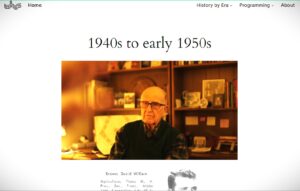 The interview with me can be seen via this link to WHUS archives.
The interview with me can be seen via this link to WHUS archives.
(Minor correction: I graduated from UConn in 1953, not 1952. My major subject then was agronomy.)
Few people would want to sit through my ramblings and eye-blinking for the entire three hours. But it does cover radio and other happenings from the 1930s until now. Next to it is a link to a more compact text that I wrote to
go with the interview. You may like to skim both, and then go back to parts that intrigue you.
Besides my interview, the WHUS archives have a rich collection of stories, photos, technical histories, etc. from
the 1920s all the way ‘til now. Besides your own era, this can be a neat way to envision how radio and its time-
settings seemed to your parents and grandparents.
***************
Listening to radio music made studying into the wee hours less stark. Being the era of AM radio and 50,000-watt clear-channel stations, one could often get exposed to music, news takes and folkways of far-away places — Nashville’s WSM, Cincinnati’s WCKY, Del Rio Texas, Canada’s CBC, and others.
By the time I was a PhD student at Iowa State, I was appreciating easy listening and light classical more. My favorite late-night listening was Jay Andreys’ Music Til Dawn out of WBBM, Chicago. American Airlines was the main advertiser. For a long time, I tended to favor that airline when booking tickets.
Iowa also opened my eyes to the roles of radio in educating farmers and homemakers. Iowa State’s WOI and other stations around the state were popular sources of information about market prices and outlook, weather, crop situations, new practices, government programs, healthy diets and recipes … and much more. The best known farm reporter was Herb Plambeck, at the large Des Moines station, WHO.
At least once when a WOI reporter was covering the weather from the studio rooftop, a tornado headed right toward him and he had to run for cover.
Some of my fellow grad students were majoring in ag communications and journalism. They were becoming skilled at boiling scientific findings down into language that most people could understand. That reinforced my leanings toward becoming an extension economist, at least part-time, rather than the more usual faculty career of writing esoteric journal articles.
********************
December 1956, driving from Washington DC to Asheville NC, then on to Knoxville TN My bride Jeannie and I were headed to our first home, where I had just started as a U of Tennessee prof. As we admired the Blue Ridges and the foot hills of the Smokies, our car radio brought us old-time Appalachian music, the Carter Family, Hank Williams, the Chuck Wagon Gang, and huff-and-puff preachers. As we reached East Tennessee, it was ads for Cas Walker’s grocery store chain. By the time we were in Knoxville, radio had given us a thorough cultural introduction.
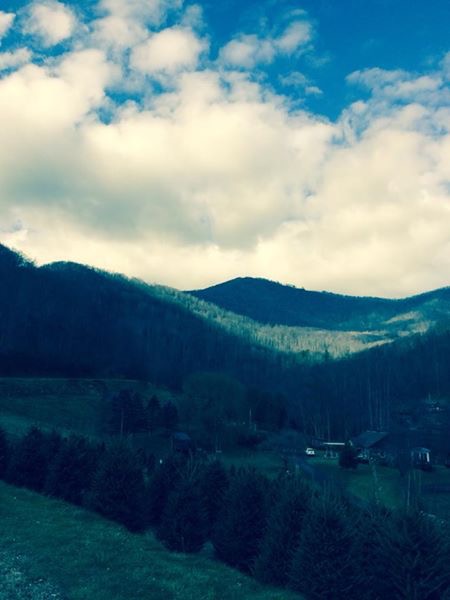 Dedicated people with slim budgets at some radio stations are still hanging in there and preserving Appalachian highlands music. By today’s norms, it’s White- and male-dominant. But the tunes, harmonies and words bring out human qualities and values that can well be uplifted these days — appreciation of natural surroundings, home places and families (mothers especially) … quiet resilience after disasters and life setbacks … remorse for wrong things done … hopes for better futures. Among others, try WPAQ of Mount Airy NC Saturday afternoons, and WDVX of East Tennessee and also NHPR of New Hampshire Sunday evenings. Better yet, plunk along on your own guitar, banjo, autoharp or whatever!
Dedicated people with slim budgets at some radio stations are still hanging in there and preserving Appalachian highlands music. By today’s norms, it’s White- and male-dominant. But the tunes, harmonies and words bring out human qualities and values that can well be uplifted these days — appreciation of natural surroundings, home places and families (mothers especially) … quiet resilience after disasters and life setbacks … remorse for wrong things done … hopes for better futures. Among others, try WPAQ of Mount Airy NC Saturday afternoons, and WDVX of East Tennessee and also NHPR of New Hampshire Sunday evenings. Better yet, plunk along on your own guitar, banjo, autoharp or whatever!
*******************
1958-60, Singapore During my two years as a visiting prof there, BBC and Radio Australia were mainstays for world news. The BBC Southeast Asian service had a big antenna “farm” at the edge of the city. They aired veteran correspondents like Dennis Bloodworth, who stayed on the scene for years and could see events in Malaya, Indonesia, Vietnam, etc. in deep perspective.
Radio there was a source of enjoyable drama too. I remember especially Radio Australia’s six-part science-fiction Day of the Triffids — much more gripping than a movie, when you just listened and used your own imagination.
********************
1961-63, College Station, Texas I joined the Texas A&M faculty as the leader of a new statewide extension farm management program. The types of farming and mental sets in the various parts of Texas were very diverse — the farmers and ranchers in the eastern Piney Woods were quite different from those near San Antonio, and from the “big boys” in the High Plains. New initiatives to reach Black farmers and Hispanic workers became part of that. So we had to adapt our use of radio and other media to fit.
The second year, I became Assistant to the Dean of Agriculture. This included arrangements for briefing the farm radio, TV and press people from all over Texas about new Experiment Station findings. Here again one had to fit several styles: Some like Johnny Watkins were high-flying personalities. Others were low-key, with journalism degrees. Common to both, I found, was that they did not like canned feed-outs. They wanted to get it from the horse’s mouth — interview the researchers themselves — and present the information in their own ways.
*******************
1963-65, Puno, Peru, 13,000 feet up, in the Andes near Lake Titicaca and Bolivia, 800 miles from Lima So here Jeannie and I were, in a new role. This time with the Iowa-USAID team, helping with agrarian reform and regional development. Hardly any phone service outside cities and towns. Shortwave radio was the quickest way to reach head offices in Lima, and to hear news. That’s how we learned about President Kennedy’s assassination.
And within the Puno region, broadcast radio became the main way to reach people out in the villages, pampas, and higher mountains. This was spurred by the Maryknoll Fathers and Brothers, who had a mission there. A key part of that was their Onda Azul radio network for teaching school subjects. This included Spanish. Most people there knew Aymara or Quechua (Inca languages), but not yet their national language.
********************
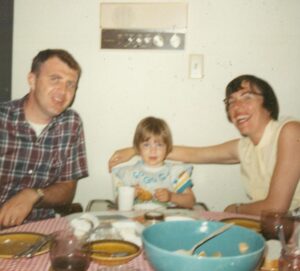
1970s, Tennessee again Besides on-campus teaching, I helped develop in-service training courses in Washington DC related to agri-rural program planning and management. These were for up-and-coming officials from developing countries. For their final week, they would come to Tennessee to see real programs at county levels, and practice applying what they learned. A key part of this was for them to meet local radio and newspaper people.
One time, in an outlying county North of Nashville, this backfired a little. We took our group to the local radio station … which was in a mobile home parked in the middle of a cow pasture, next to a tall antenna. The station’s farmer-owner welcomed us, told about his operation and audiences, then started chatting about the countries where our students came from. One student went on and on about how things were pretty bad, with a dictator and all. Turned out that the station owner was broadcasting all this live. We had a worried student on our hands.
*******************
1982-87, Rome, at UN/Food and Agriculture Organization headquarters As chief of FAO’s situation and outlook service, sometimes I gave briefings and backgrounders to journalists. The Nordic group of journalists were particularly attentive and systematic in their coverage. Their lines of questioning, in a friendly yet incisive way, uncovered neglected aspects of our outlook work, such as the roles of non-government organizations in developing countries. Radio and other media people can have constructive influences without being aggressive.
********************
1988-90, Indonesia, with a USAID food-crop diversification program In six pilot provinces spread across four major islands, we and our counterparts were testing out ways to encourage more farmers to grow beans, maize and other crops for nutritional balance, instead of so much rice. At the heart was a social marketing approach — integrated communications — which would blend mass-media information with on-the-ground test-demonstrations, farmers’ meetings, information handouts, acceptance-testing of new kinds of food.
Radio was a big part of this. Agricultural specialists had been relying on rather dull programs, broadcast on government radio stations, in mid-day … when most farm families were out working in the rice padis. We researched which stations they listened to and when, which turned out to be certain commercial stations, early in the morning. Then the group prepared and broadcast ear-catching spot announcements, and even radio dramas, with food-crop recommendations woven into the scripts. Good soil conservation practices and cooking recipes were woven in too.
But we had to make sure not to mislead. We ran some numbers for typical farm-family situations to make sure the recommended practices were affordable, profitable, and in tune with urbanizing life styles.
********************
1990-93, Peshawar, in North West Pakistan, with the Illinois-USAID agricultural development team Another twist on using radio as part of integrated social marketing. BBC beamed out from London a shortwave radio service in Pashtu, the main language of NW Pakistan and nearby parts of Afghanistan. It had a studio in Peshawar, which created dramas in Pashtu to be broadcast from London. Many had “social” messages buried in them that were timed to fit local programs — e.g., vaccination clinics, with the dramas having lead characters say “I hear there’s a clinic next week … let’s all go to it.” BBC staff ground-proofed afterwards and, sure enough, there was noticeable impact. Also, BBC encouraged us at the ag university to suggest useful messages in upcoming dramas.
We should do so well with uses of radio and social-information campaigns right here in Rhode Island ….
********************
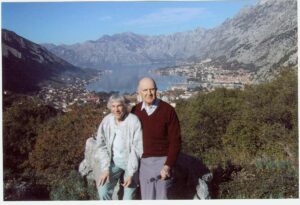
My wife and I had wonderful semi-retirement involvements and travels, based in Newport RI, from 1993 until her passing in 2011. A new radio-related outlet of mine since then has been via the very active Newport County Radio Club (see http://w1sye.org). I haven’t sought advanced amateur radio qualifications, but do have a basic “technician” license (with a nifty FCC call sign, KC1AAA). Since 2013 I’ve taken part in the Club’s emergency communications, reach-the-world competitions, youth learning, and storm-watch exercises. And contributed some photo-stories about these. And enjoyed learning from and socializing with bright Club members with unique backgrounds.
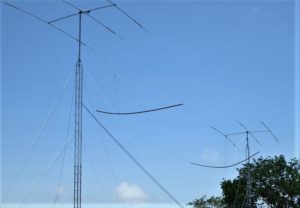
Now I’m living at a John Clarke senior living apartment near Newport. No longer driving or going to events much. So besides on-line webinars and such, live-streaming music, news and special doings from far-away stations is at the heart of my days and evenings.
Modern-day radio is bringing the world to — and brightening life for — older persons like me!
 by David W Brown Middletown RI April 2024
by David W Brown Middletown RI April 2024 After school, there were the 15-minute serials, advertising breakfast cereals — Jack Armstrong, Hop Harrigan, Captain Midnight, and — my favorite — Tom Mix. To send in cereal boxtops and 25 cents for hike meters, secret decoders, and such was a big part of it. http://old-time.com/kidshows/ Then, around 7 to 8, came the half-hour shows … especially the Lone Ranger, whose theme, the Willliam Tell Overture, still yields nice recollections.
After school, there were the 15-minute serials, advertising breakfast cereals — Jack Armstrong, Hop Harrigan, Captain Midnight, and — my favorite — Tom Mix. To send in cereal boxtops and 25 cents for hike meters, secret decoders, and such was a big part of it. http://old-time.com/kidshows/ Then, around 7 to 8, came the half-hour shows … especially the Lone Ranger, whose theme, the Willliam Tell Overture, still yields nice recollections. The interview with me can be seen via this link to WHUS archives.
The interview with me can be seen via this link to WHUS archives.
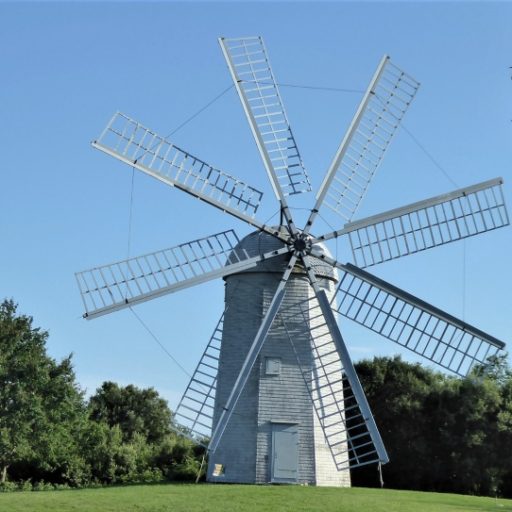
 Dedicated people with slim budgets at some radio stations are still hanging in there and preserving Appalachian highlands music. By today’s norms, it’s White- and male-dominant. But the tunes, harmonies and words bring out human qualities and values that can well be uplifted these days — appreciation of natural surroundings, home places and families (mothers especially) … quiet resilience after disasters and life setbacks … remorse for wrong things done … hopes for better futures. Among others, try
Dedicated people with slim budgets at some radio stations are still hanging in there and preserving Appalachian highlands music. By today’s norms, it’s White- and male-dominant. But the tunes, harmonies and words bring out human qualities and values that can well be uplifted these days — appreciation of natural surroundings, home places and families (mothers especially) … quiet resilience after disasters and life setbacks … remorse for wrong things done … hopes for better futures. Among others, try 

